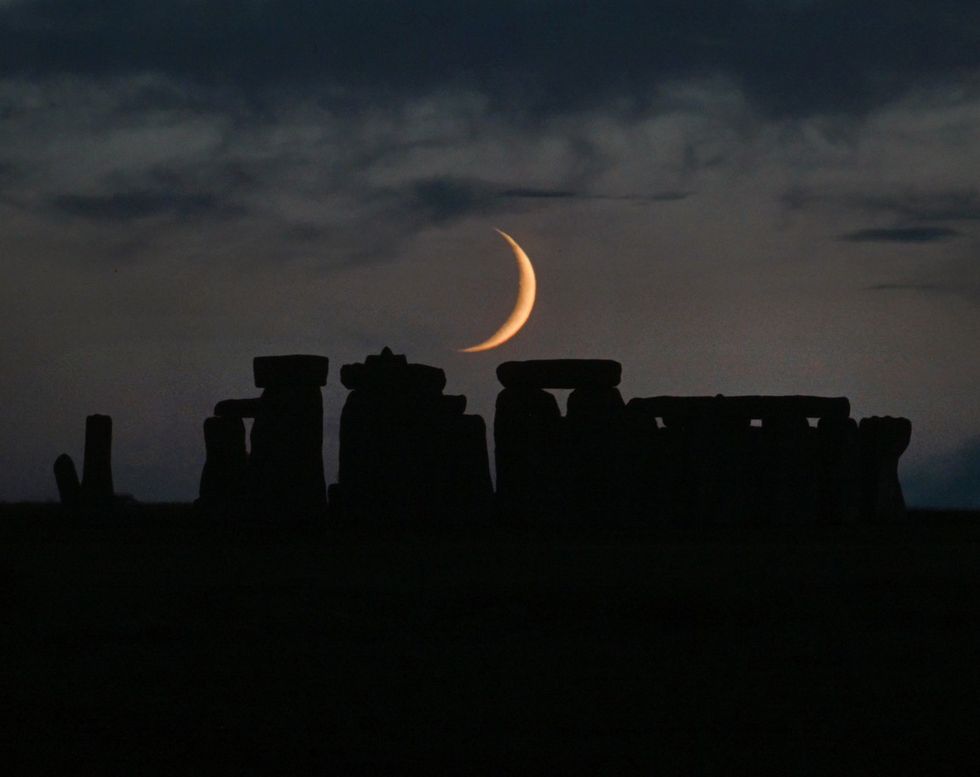For more than 5000 years, Stonehenge has intrigued historians, archaeologists, and visitors alike. This ancient monument and burial site in southern England is known for its enigmatic stone circle, but its true purpose has remained a mystery.
A very recent research suggests a possible connection between Stonehenge and the Moon, which may have influenced the monument's design and purpose. The 18.6-year cycle of major lunar standstills presents a unique opportunity for researchers to explore this intriguing theory.
Well-known connection with the Sun
While Stonehenge's alignment with the Sun is well-known particularly during the summer solstice the potential link between the monument and the Moon has been less understood. The English Heritage team, along with researchers from several universities and the Royal Astronomical Society, are now Stonehenge may have aligned with the Moon during its lunar standstill cycle.
During a major lunar standstill, which occurs every 18.6 years, moonrise and moonset are furthest apart along the horizon. The next standstill is set to occur in 2024-25, allowing researchers to study the connection between Stonehenge and the Moon's extreme positions.
Lunar connections are still unknown
The study of lunar standstills at the Stonehenge is not entirely new. Researchers have debated for years whether the monument's alignment with the Moon was intentional and what purpose it might have served. Bournemouth University’s Dr. Fabio Silva believes that people may have gathered in Wiltshire to observe the Moon's movements during Stonehenge’s early construction.
Dr. Silva and his team are currently documenting the Moon's movements about the stones. They aim to shed light on how Stonehenge’s design may have aligned with lunar cycles, as well as its purpose in ancient times.
"So we could be talking about a generational event that people might have come to Wiltshire for. We'll never be able to prove this, but the greater understanding we can get of these monuments and the Moon, the stronger the argument will be," said Dr Fabio Silva from Bournemouth University.
"It's rising further to the north than it has done and a fortnight later, it rises further to the south and we believe places like Stonehenge might have aligned to the Moon when it's doing this. It will add a much more diverse nuance to the answers we already have," Dr Silva continued.

Stonehenge an ancient solar calendar
In addition to studying the Moon's influence, experts have also been exploring how Stonehenge may have functioned as a solar calendar. In 2020, Stonehenge expert Timothy Darvill visited the site during the COVID-19 pandemic and had the opportunity to contemplate the monument’s design more deeply. His findings, published in the journal *Antiquity*, suggest that Stonehenge may have been an ancient solar calendar.
A ring of 30 upright sarsen stones once stood in a circle representing each day of the month, while additional stones tracked leap years and solstices. The monument's design allowed ancient peoples to keep track of the days and months of the year and celebrate important events such as the harvest festival.
A site of worship, celebration, burial
Stonehenge likely served multiple purposes throughout its history. Beyond its potential function as a calendar, it may have been a site for worship, celebration, burial, art, and architecture. These functions likely evolved as different groups of people used the monument for various reasons.
In its early days, Stonehenge may have been more of a burial site. As people began to worship the Sun, the monument could have been adapted to serve as a calendar for tracking the harvest festival. Burials at the site also indicate that people travelled from afar to worship there, suggesting it held significance for many across Europe.
Livestream the southernmost moonrise at Stonehenge
English Heritage is hosting events and activities to engage the public in the study of Stonehenge's potential lunar connection. This includes talks, a pop-up planetarium, stargazing, and a new display in the exhibition space. The organisation will also livestream the southernmost moonrise at Stonehenge, allowing people around the world to witness the monument's alignment with the Moon.

















